Related Research Articles
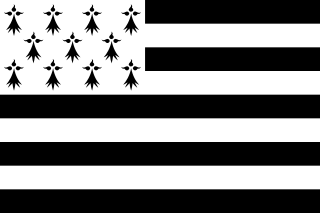
The flag of Brittany, a region in the northwest of France, is called the Gwenn-ha-du, pronounced [ɡwɛnaˈdyː], which means white and black, in Breton. The flag was designed in 1923 by Morvan Marchal. It is also unofficially used in the department of Loire-Atlantique, although this now belongs to the Pays de la Loire and not to the region of Brittany, as the territory of Loire-Atlantique is historically part of the province of Brittany. Nantes, its prefecture, was once one of the two capital cities of Brittany.
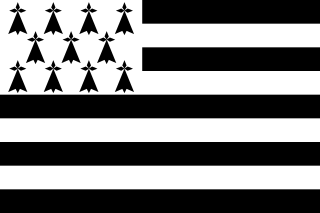
Breton nationalism is a form of regional nationalism associated with the region of Brittany in France. The political aspirations of Breton nationalists include the desire to obtain the right to self-rule, whether within France or independently of it, and to acquire more power in the European Union, United Nations and other international institutions.
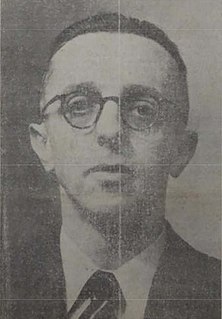
Olier Mordrel is the Breton language version of Olivier Mordrelle, a Breton nationalist and wartime collaborator with the Third Reich who founded the separatist Breton National Party. Before the war, he worked as an architect. His architectural work was influenced by Art Deco and the International style of Le Corbusier. He was also an essayist, short story writer, and translator. Mordrel wrote some of his works under the pen names Jean de La Bénelais, J. La B, Er Gédour, A. Calvez, Otto Mohr, Brython, and Olivier Launay.

Before and during World War II, the various Breton nationalist movements were generally right-wing, and sometimes fascist. The extent to which this led to collaboration with the Nazi occupiers of France during the war, together with their motivations, is a matter of historical controversy.
Job de Roincé, was a French journalist and writer, and also one of the founding figures of Breton nationalism.
Pêr-Jakez Helias, baptised Pierre-Jacques Hélias, nom de plumePierre-Jakez Hélias (1914–1995) was a Breton stage actor, journalist, author, poet, and writer for radio who worked in the French and Breton languages. For many years he directed a weekly radio programme in the Breton language and co-founded a summer festival at Quimper which became the Festival de Cornouaille.

The Breton regionalist union was a Breton cultural and political organisation created August 16, 1898. It was a broadly conservative grouping dedicated to preserving Breton cultural identity and regional independence. It expressed the ideology of mainly middle-class and aristocratic groups to secure continuity in local administration and Breton culture.
René-Yves Creston, born René Pierre Joseph Creston, was a Breton artist, designer and ethnographer who founded the Breton nationalist art movement Seiz Breur. During World War II he was active in the French Resistance.
Maurice Duhamel was the pen-name of Maurice Bourgeaux, a Breton musician, writer and activist who was a leading figure in Breton nationalism and federalist politics in the years before World War II.
Morvan Lebesque, was the Breton language name of Maurice Lebesque, a Breton nationalist activist and French journalist.
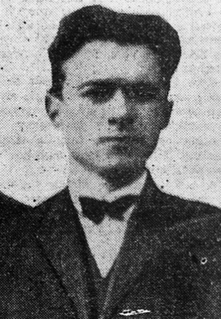
Théophile Jeusset was a Breton nationalist writer and fascist political activist. He is also known by his Breton language pseudonym Jean-Yves Keraudren.
The Breton Nationalist Party was a French political party that advocated independence for Brittany. It existed from 1911 to 1914.
Louis Napoléon Le Roux was a Breton nationalist. He is also known as Loeiz-Napoleon Ar Rouz in the Breton language.

François Falc'hun was a French linguist known for his theories about the origin of the Breton language. He was also an ordained Canon in the Catholic clergy.

Joseph Loth was a French linguist and historian who specialised in the study of Celtic languages.
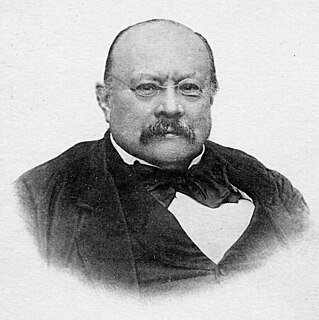
Arthur Le Moyne de La Borderie, was a Breton historian, regarded as a father of Brittany's historiography.

François Eliès, born Fañch Eliès and better known by the pseudonym Abeozen, was a Breton nationalist, novelist and dramatist who wrote in the Breton language. Abeozen was also a noted scholar of the Welsh language.
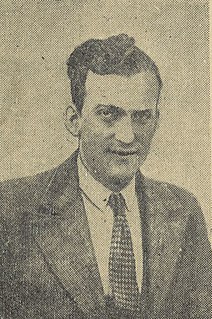
Joseph-Marie Jaffré, better known as Job Jaffré, was a French journalist and Breton nationalist. He also published under pseudonyms, most notably as Jos Pempoull.
Fañch Broudig or François Broudic is a Breton journalist and Breton- and French-language writer.

Donatien Laurent was a French musicologist and linguist.